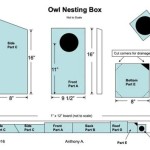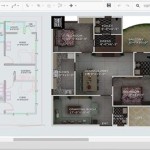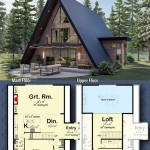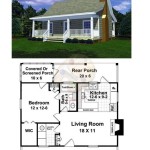What Is A Floor Plan Form?
A floor plan form, at its core, is a standardized document or template used to capture and represent the spatial arrangement of a building or a specific area within a building. It serves as a structured framework for visualizing the layout, dimensions, and key features of a space, facilitating communication and collaboration among various stakeholders involved in design, construction, real estate, and property management. While the complexity and detail included can vary significantly depending on its intended purpose, the fundamental goal remains consistent: to provide a clear and accurate visual representation of the physical space.
The utility of a floor plan form extends far beyond simply depicting the shape and size of a room. It acts as a crucial communication tool, enabling architects, interior designers, contractors, real estate agents, and homeowners alike to understand the relationships between different spaces, visualize potential design changes, and plan effectively for furniture placement, renovations, and other modifications. A well-designed floor plan form can streamline the design process, minimize misunderstandings, and ultimately contribute to a more successful and efficient project outcome.
The specific format and content of a floor plan form can vary considerably. Some are simple sketches intended for quick conceptualization, while others are highly detailed, computer-aided designs (CAD) that include precise measurements, structural details, and even the locations of electrical outlets and plumbing fixtures. Regardless of the level of detail, the underlying principle remains the same: to provide a clear and easily understandable representation of the spatial arrangement of a building or space.
Key Points to Consider When Using a Floor Plan Form
The effectiveness of a floor plan form hinges on several critical factors that influence its clarity, accuracy, and usability. Understanding these key considerations is essential for both creating and interpreting floor plans effectively. Failing to address these points can lead to misinterpretations, design flaws, and costly errors during construction or renovation.
Accuracy and Scale
One of the most important aspects of a floor plan form is its accuracy. The dimensions and proportions of the represented space must be meticulously measured and accurately reflected in the drawing. This includes the overall footprint of the building, the size of individual rooms, the width of hallways, and the placement of doors and windows. Inaccurate measurements can lead to significant discrepancies during construction or renovation, resulting in wasted materials, delays, and compromised design integrity.
Scale is inextricably linked to accuracy. A floor plan is typically drawn to a specific scale, which indicates the relationship between the dimensions on the drawing and the actual dimensions of the building. Common scales include 1/4 inch = 1 foot or 1/8 inch = 1 foot. Ensuring that the drawing is accurately scaled is crucial for interpreting the dimensions correctly and for using the floor plan for tasks such as furniture placement or material estimation.
Furthermore, it's important to note the difference between internal and external dimensions. Internal dimensions refer to the measurements inside the walls, whereas external dimensions include the thickness of the walls themselves. Clearly distinguishing between these measurements is vital for accurate planning and construction.
The tools used for creating a floor plan form also impact accuracy. While hand-drawn sketches can be useful for initial conceptualization, they are typically less accurate than computer-generated drawings. CAD software allows for precise measurements and automated scaling, minimizing the risk of human error. Laser measuring devices and specialized software applications can further enhance accuracy by allowing users to directly input measurements into the floor plan form.
Clarity and Readability
A floor plan form should be easily understandable, even to individuals who are not familiar with architectural drawings. This requires careful attention to clarity and readability. The use of consistent symbols and conventions is essential for conveying information effectively. For example, doors are typically represented as an arc showing the direction of swing, while windows are depicted as parallel lines. A legend or key should be included to explain any symbols or abbreviations used in the drawing.
Line weights and text sizes should be carefully chosen to ensure that the drawing is legible and visually appealing. Thicker lines are typically used to represent walls, while thinner lines are used for other features such as furniture or fixtures. Text should be appropriately sized and clearly labeled to avoid ambiguity. Overcrowding the drawing with too much information can also detract from its clarity. It's often better to create separate floor plans for different purposes, such as one for architectural details and another for furniture layout.
Consistency in drawing style is also important. Using a uniform approach to representing different features and elements will make the floor plan easier to interpret. This includes using consistent line types, colors, and symbols throughout the drawing. Adhering to industry standards and best practices for architectural drafting can further enhance clarity and readability.
The orientation of the floor plan should also be considered. Typically, floor plans are oriented with north facing up to provide a clear sense of direction. However, this may not always be practical, especially for irregularly shaped buildings. In such cases, it's important to clearly indicate the orientation of the floor plan using a north arrow or other similar marker.
Information and Detail
The level of information and detail included in a floor plan form should be appropriate for its intended purpose. A simple floor plan used for real estate marketing may only include the basic layout of the rooms and their approximate dimensions. In contrast, a detailed floor plan used for construction or renovation will need to include a much wider range of information, such as the location of structural elements, electrical outlets, plumbing fixtures, and HVAC systems.
The inclusion of specific features such as doors, windows, and stairs is essential for understanding the flow of movement through the building. The dimensions of these features should also be clearly indicated. For example, the width of doorways should be specified to ensure that they are wide enough to accommodate wheelchairs or large furniture items.
For more complex projects, it may be necessary to include additional details such as ceiling heights, wall thicknesses, and the materials used for construction. These details can be crucial for accurate cost estimation and compliance with building codes.
The use of annotations and notes can also be helpful for providing additional information about specific features or areas of the building. For example, a note might indicate the type of flooring used in a particular room or the location of a specific electrical outlet. However, it's important to use annotations sparingly and to ensure that they are clearly legible and do not clutter the drawing.
Finally, the date and version number of the floor plan should always be clearly indicated. This is particularly important for projects that involve multiple revisions, as it allows users to easily identify the most current version of the drawing. Including the name of the architect or designer who created the floor plan can also be helpful for tracking down additional information or clarification.
In conclusion, a floor plan form is a versatile tool that can be used for a wide range of purposes, from initial design conceptualization to detailed construction planning. By understanding the key considerations outlined above, users can ensure that their floor plans are accurate, clear, and informative, ultimately contributing to more successful and efficient projects.

15 Key Floor Plan Symbols 74 Architectural Abbreviations Foyr

Floor Plans Everything You Need To Know Edrawmax

Thinking Of An Open Floor Plan Read Our Pros And Cons The Congressional Group Llc

15 Key Floor Plan Symbols 74 Architectural Abbreviations Foyr

Floor Plan Jump Image Management

Building A Modern L Shaped Architect S House Floor Plan Design

A Filled In Typical Floor Plan Form Used Reconnaissance Visits To Scientific Diagram

Floor Plan Of The School Ground In Its Initial Form Scientific Diagram

Versatile An Efficient Floor Plan For Young Retirees And Dow House Of Three

Plan Of The Typical Middle Class House Model First Form Scientific Diagram
Related Posts








